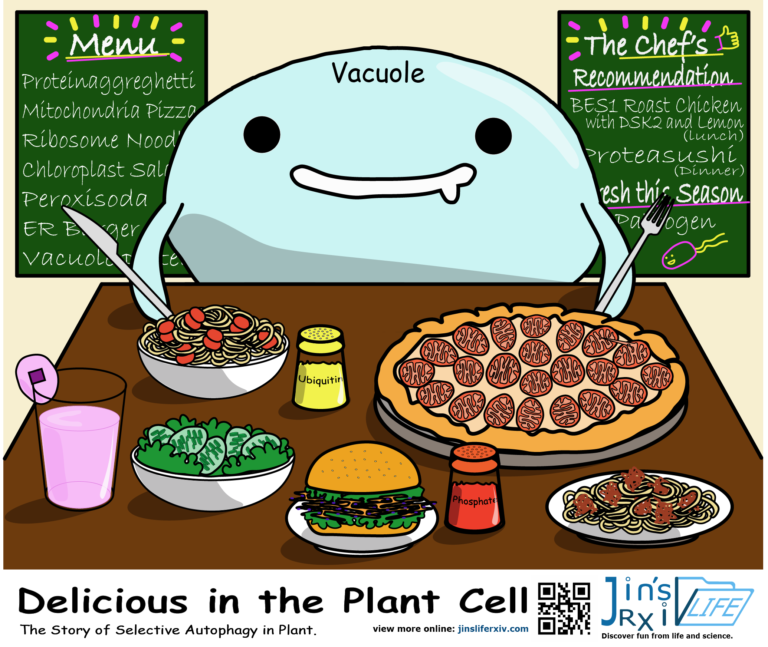
If plant cells lack nutrients or encounter environmental stresses, what will they “eat” for survival? Inspired by “Delicious in Dungeon,” I create this illustration to show targets of selective autophagy in the plant cell.
Autophagy means “self-eating,” it’s a process that cells use for degradation and intracellular recycling. Autophagy is found in plants and other eukaryotes. In plant cell, autophagy occurs in vacuole, a large, membrane-bound organelle that contains hydrolytic enzymes.
Although originally thought to be an unrestricted degradation system, studies shown that autophagy can be selective by engaging a wide array of receptors that recognize specific cargo. In this way, macromolecular complexes (proteasomes and ribosomes), protein aggregates, endoplasmic reticulum (ER) fragments or nuclei, cell organelles (mitochondria, peroxisomes, and chloroplasts), specific proteins (BES1), and pathogens can be selective removed and be recycled.
Adobe Illustrator with mouse
